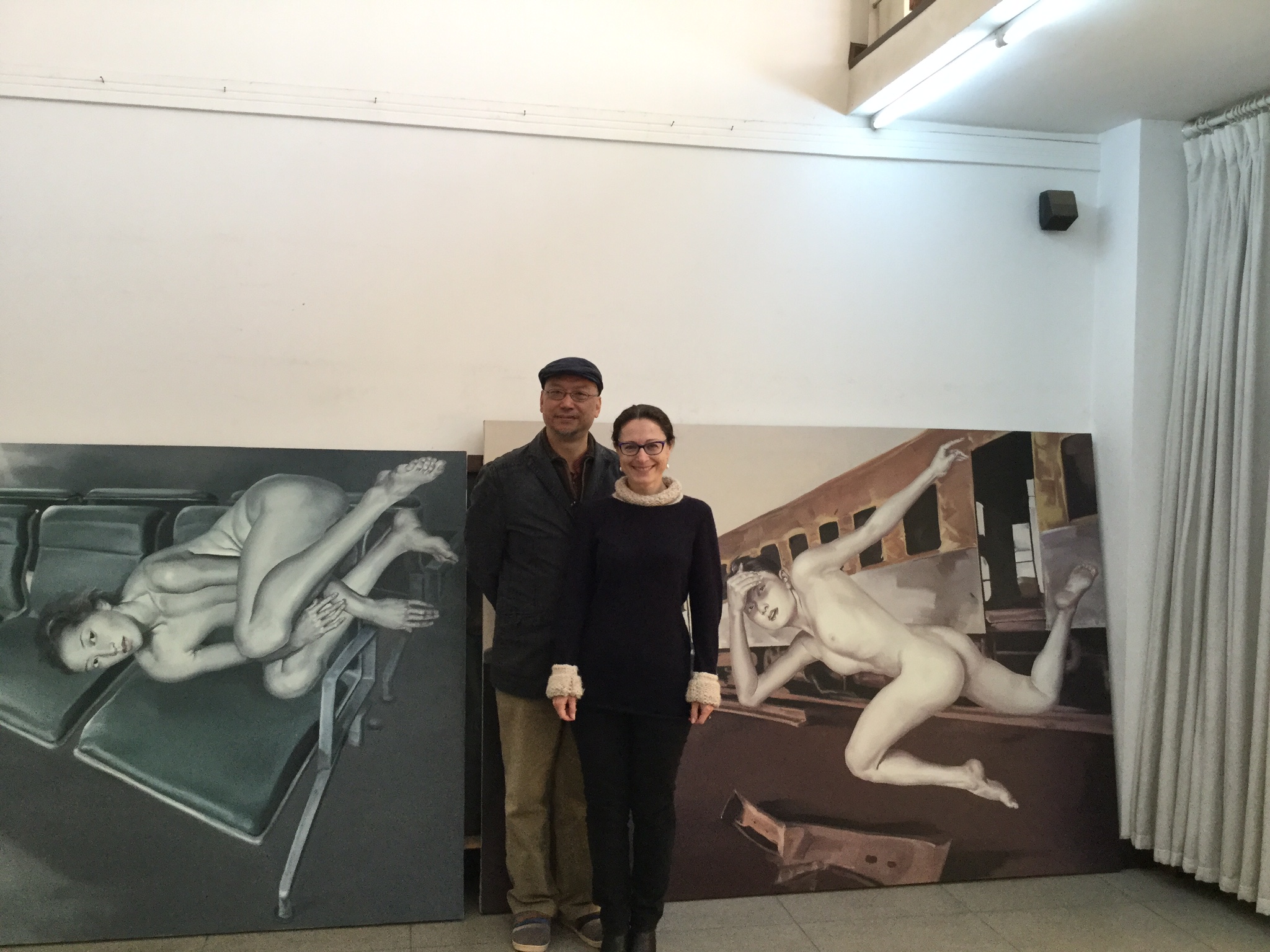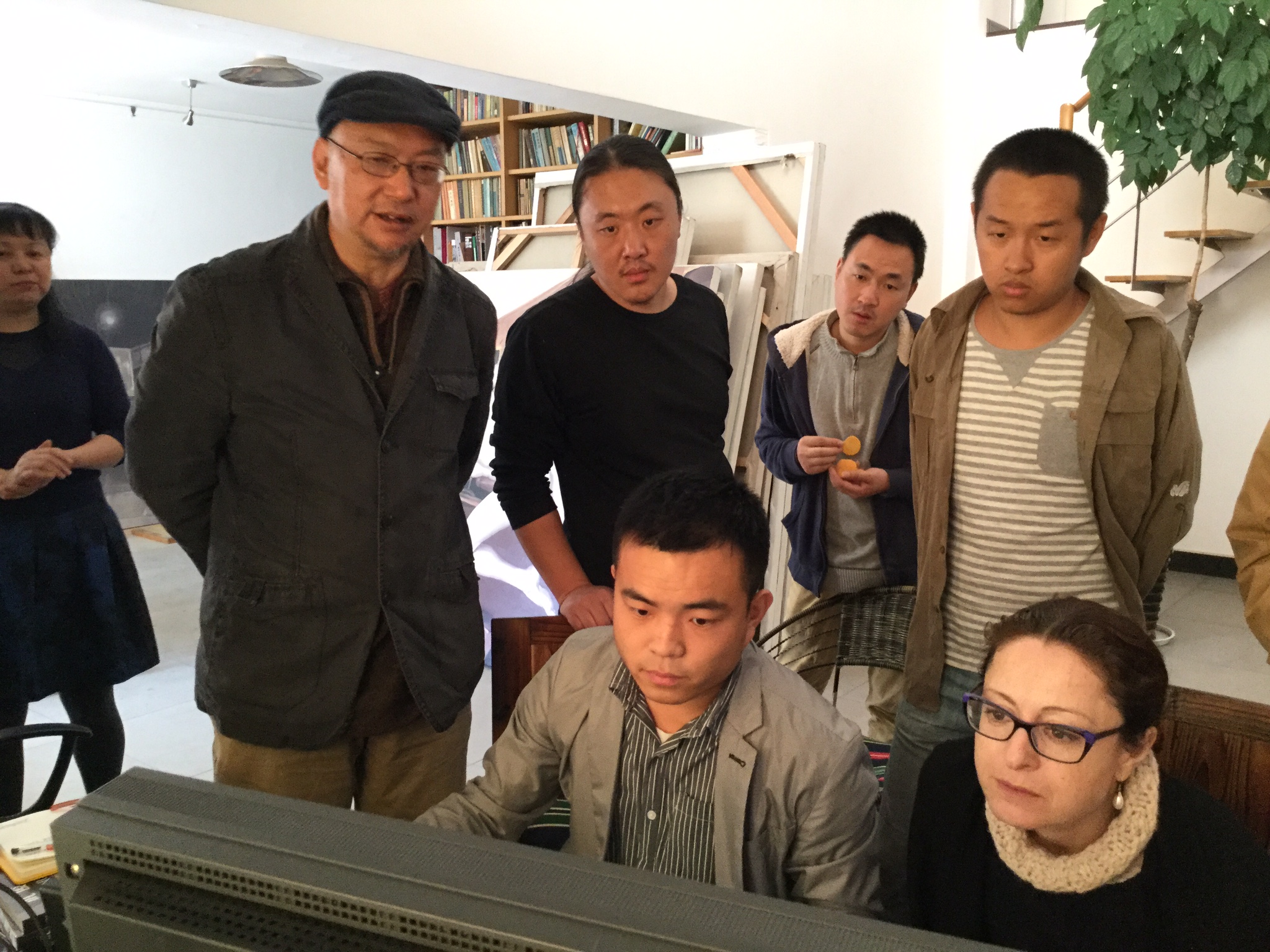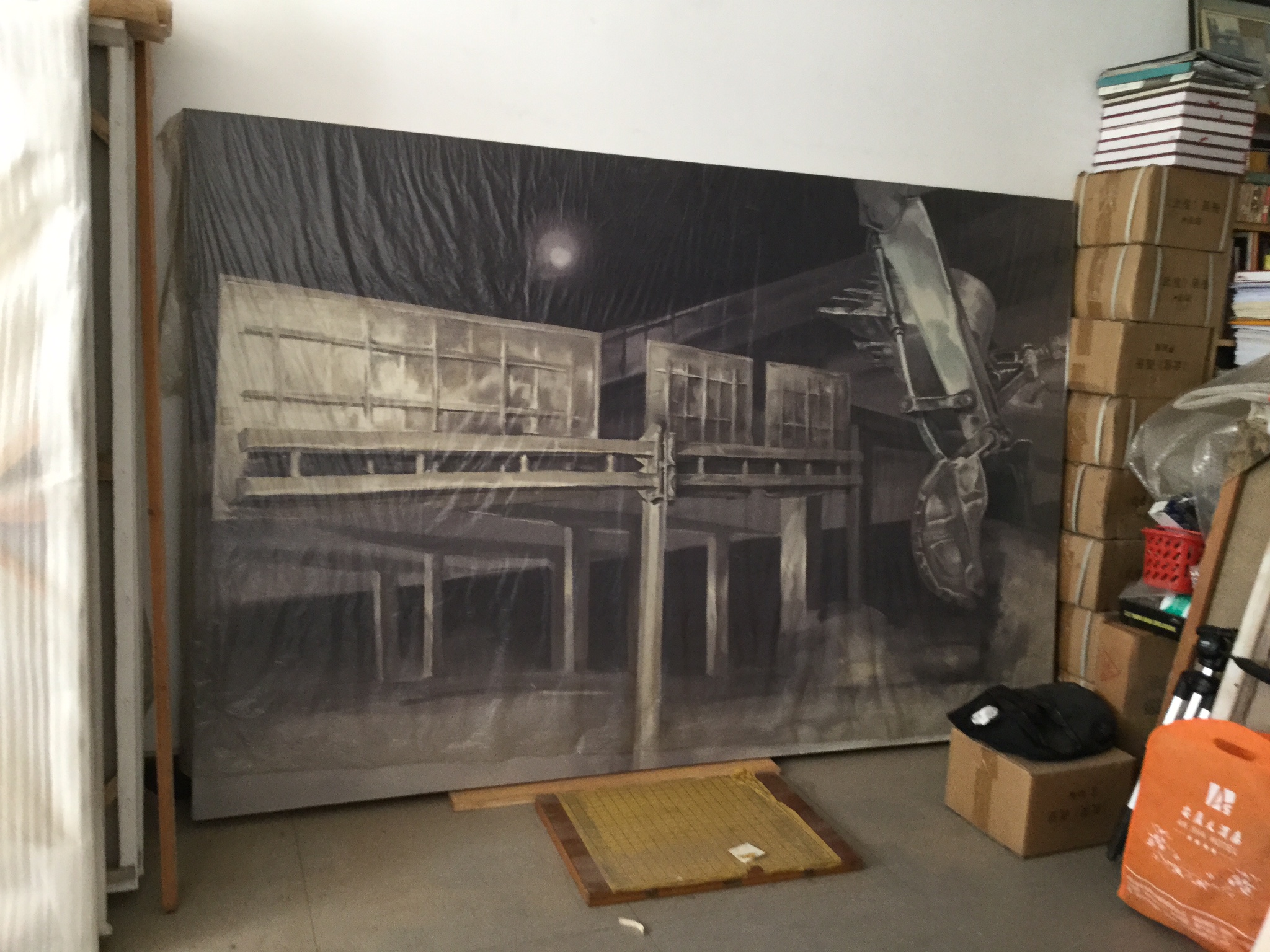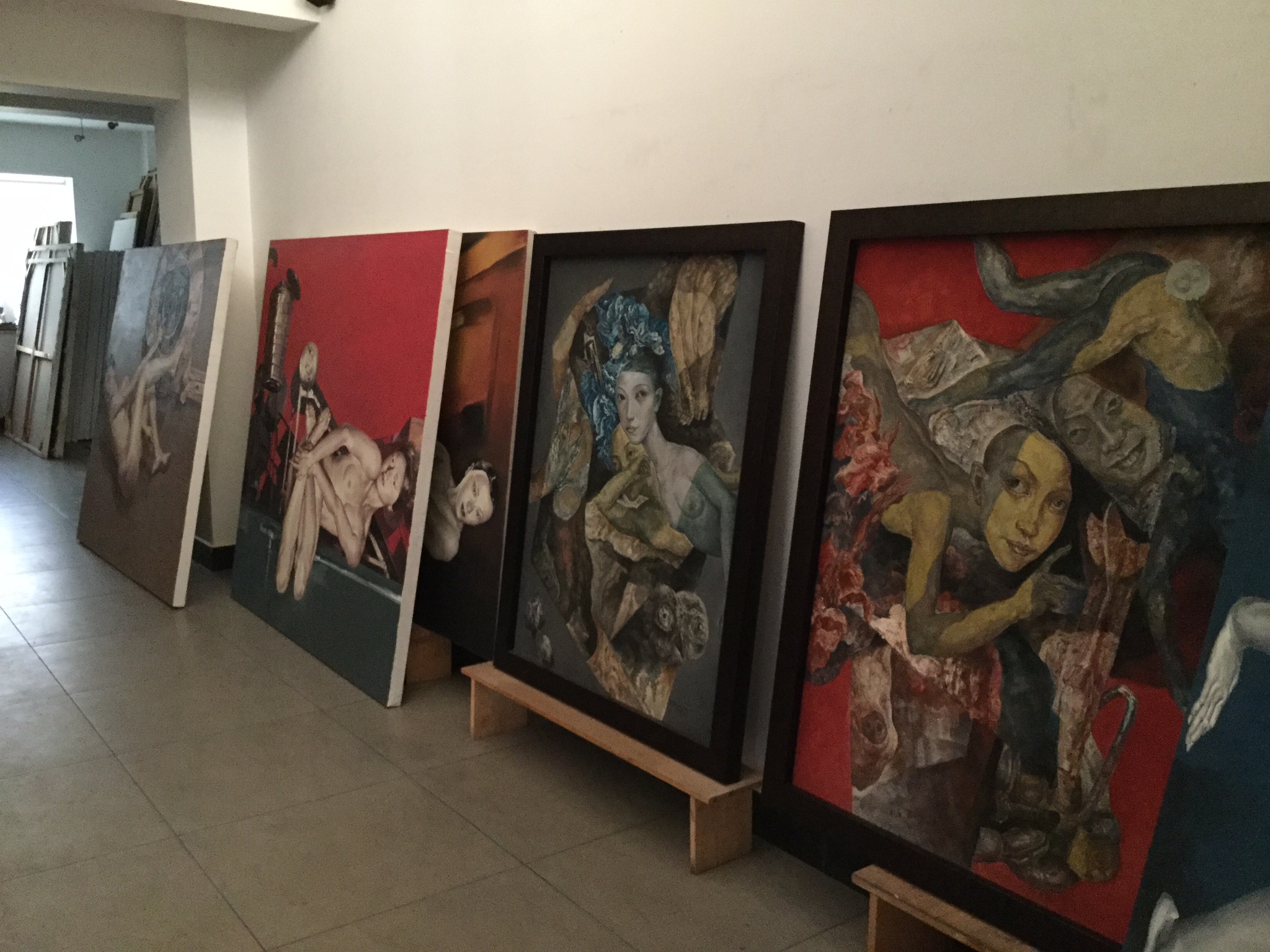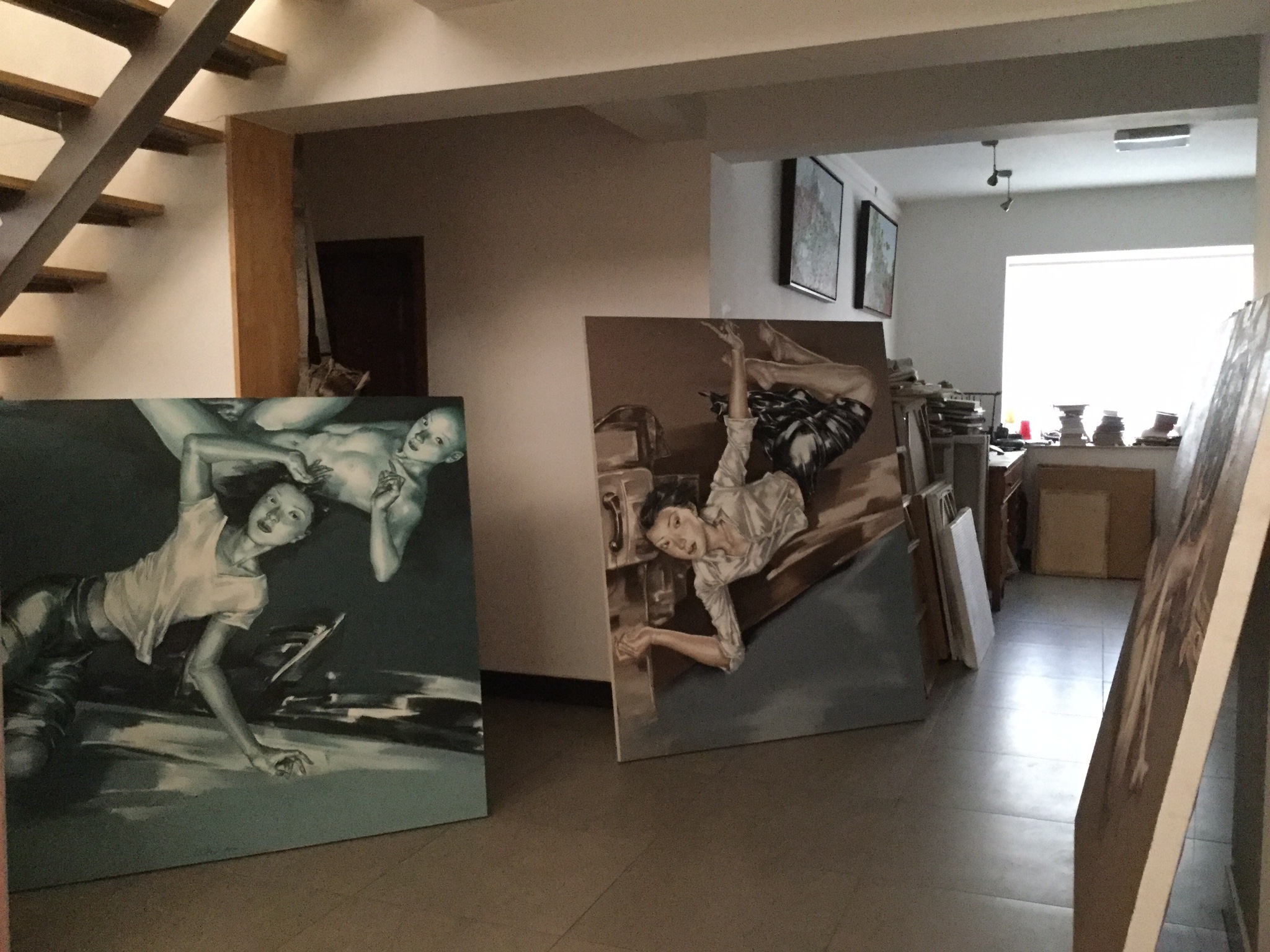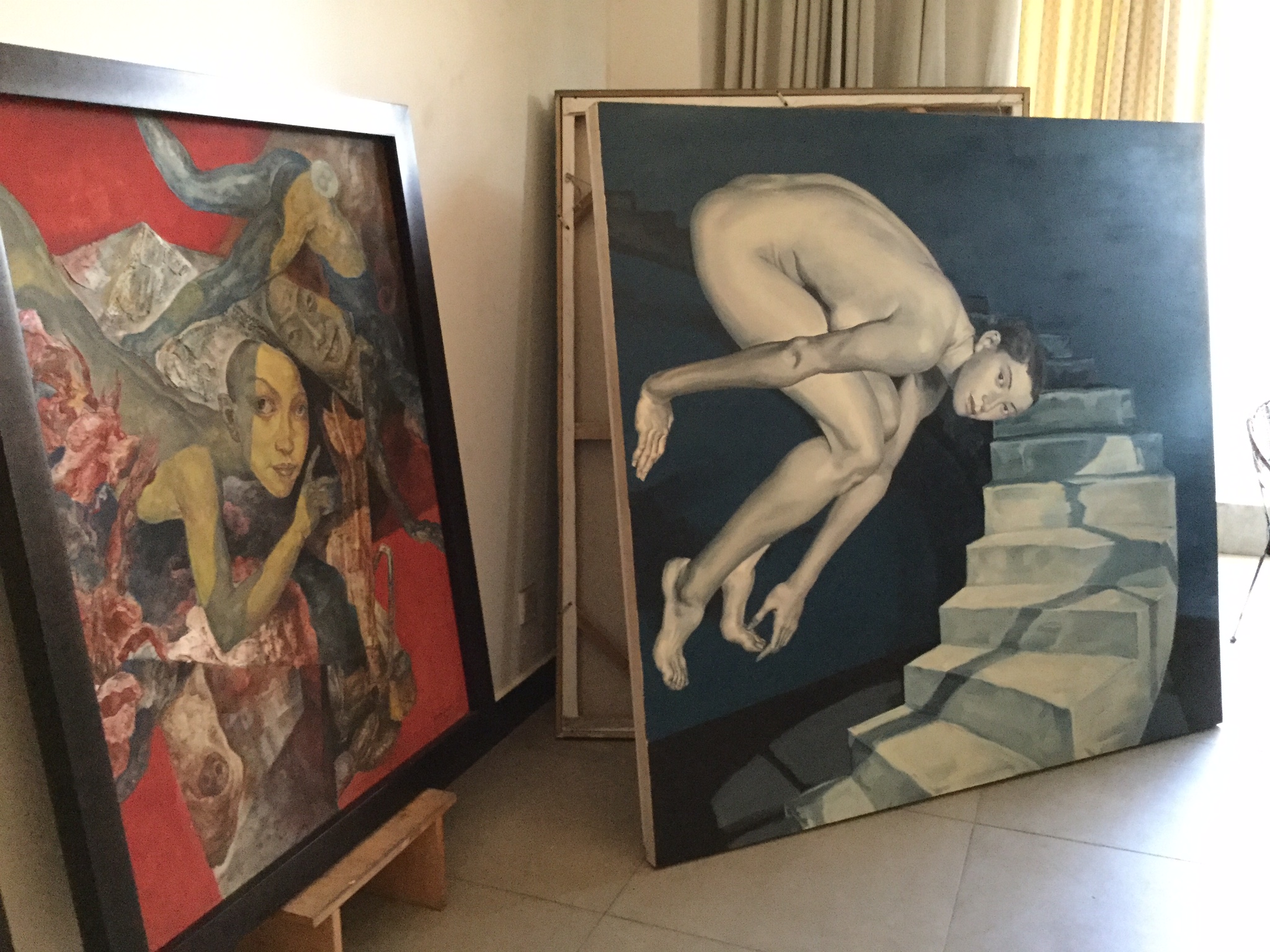Wu Jun
(b. 1958, Kunming, China)
Every winter Kunming welcomes seagulls flying from the north. Such migration for survival allows us to feel the significance of living in today’s environment…. In modern cities people’s internal world is often floating, roaming … rapid change fosters both beautiful dreams and terrible pitfalls.” (Wu Jun)
Mind the Space Between Reality and Unreality (Tian Wei)
Wu Jun's works interrogate the relationship between change and state of mind. Whether remote or engaging with the viewer, his figures are suspended in the present while contemplating the direction of the future. They are like ghosts, rootless and - for the moment - displaced by change.
Wu Jun (b. 1959) was born in Maguan county, in the Yunnan Province of China, and raised in Kunming. He graduated from the prestigious Central Academy of Fine Art (CAFA) in Beijing and subsequently held the post of Chairman of the Oil Painting Department at the Yunnan Academy of Fine Art. He recently resigned the chairmanship in order to concentrate on his art, although he continues to teach as a Professor at the Yunnan Academy of Fine Art.
Wu Jun’s earlier works explore group psychology whereas his mature works contemplate the psychological impact of change on the individual. His works are accessible to all who have experienced change yet his expression is rooted within the philosophies and perceptions of his culture. The rise and fall of the Cultural Revolution and the subsequent influx of Western values after China's long period of isolation brought a vast and complex change in cultural and world perceptions. The ground has been lifted from under the feet of several generations, their “truths” dissolving, shifting, evolving.
The disorientation brought by change took millions of people across China on a physical and psychological journey to find new bearings. Within this process, Wu Jun interrogates the tensions between internal psyche and objectivity. Such collisions between reality and non-reality have been of particular interest to him after an incident in his childhood. His floating, weightless, drifting forms are often set within overlapping fragments of reality. He writes:
Every winter Kunming welcomes seagulls flying from the north. Such migration for survival allows us to feel the significance of living in today’s environment…. In modern cities people’s internal world is often floating, roaming … rapid change fosters both beautiful dreams and terrible pitfalls.”
Wun Jun perceives women as the most vulnerable of the City Migrators, having the most hope and thus risking the most despair. He examines the human form from all angles, evoking a different emotional response with each position. His interest in the body as a form of artistic expression goes back to Peter Brook’s philosophy that the body is symbolic, encompassing wide-ranging and diverse biological, sexual, literary and cultural meanings. For Wu Jun, the young women are representative of creation, desire, seduction, wishes, dreams. It is the first form he sees in his mind's eye when looking at a blank canvas.
Wu Jun’s floating bodies are sometimes set amidst fragmented artefacts (symbolic of cultural and visual memories) or fragments of inverted skylines or migrating birds. Other times the women float beside their lush modern clothing which appears plastic and alien. Despite the often hyper-realistic style, there is a fragmentary feeling to his work which removes images from their traditional significance, causing us to re-evaluate them.
A running theme through Wu Jun’s works is the “collapse of a unified image” and the emergence of a contemporary culture that places greater emphasis on individualised experiences. He believes that contemporary art is a non-focal space that is constantly evolving in response to the tensions and confrontations of the individual and their changing environment, a space where "cultural evolution is of foremost importance”.
Below is more information about Wu Jun, including his Early Works and Collage, other series of works, and a fascinating childhood recollection of an incident that influenced the development of his entire career. Also included are photographs from a visit to his studio, his bibliography, and select international exhibitions.
Early Works And Collage
Animals, Plants and Landscapes: '90s - 2015
Flying Bodies: '90s - 2015
Excerpt from a Recollection - The Influence of a Fortuitous Incident of Mushroom Poisoning
Click on the image below for text
Visit to the Studio
Catalogue
Wu Jun: Deviation and Weightlessness, a catalogue of works including essays and interviews, curated by Dave Lam, ed. Sandy Pang, (Expol-Sources Gallery Ltd, Hong Kong), 2007.
Select Exhibitions
Wu Jun participates in extensive exhibitions in China and abroad. Below is a list of selected exhibitions.
2015 - Two states of the art, China-German Art Exchange Exhibition, Germany
2014 – Pro-Green: an attitude related to Nature, Yunnan Museum, Kunming
2013 - Southwest China Invitational Exhibition: Our Land and Our People, Guanxi Art Gallery, Nanning, China
2012 - Harmony with disagreement: 14+14 Contemporary Art Exhibition, Song Zhuang Modern Art Gallery, Beijing
2011 - Seeds from Yunnan, Group exhibition of Yunnan Artists, Soka Contempprary Art Center, Taipei and Tainan, Taiwan
2011 - View from Mountain Guishan: Chendu Biannual Invitational Exhibition, K Space, Chendu
2010 - 32nd New York International Art Fair, New York, United States
2007, 2008 – Art Singapore, Asian Contemporary Art Museum, Singapore
2007 - Migration and Loss of Gravity, Solo Exhibition, 798 Art Space, Beijing
2007 – Korea International Art Fair, Seoul, Korea
2006 – Art Beijing 2006, Beijing, China
2005 – Kunming – Taipei, Contemporary Artists Invitational Exhibition, Kunming City Museum
2003 – The Third Chinese Oil Painting Exhibition, National Art Museum, Beijing, China
1998 – The Fifth Chinese Contemporary Arts Exhibition, Sichuan Academy of Fine Arts, Sichuan
1995 – Current Status Exhibition, China Arts Center, Columbia University, USA
1994 – The Second Chinese Oil Painting Exhibition, National Art Museum, Beijing
1987 – The First Chinese Oil Painting Exhibition, Shanghai Art Museum, Shanghai






